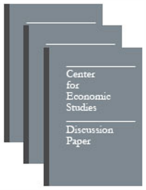Changes in Neighborhood Inequality, 2000-2010
Changes in Neighborhood Inequality, 2000-2010
Abstract
Recent work has suggested that higher income inequality may be a desirable attribute of a neighborhood in that it represents diversity, even though high (and rising) inequality appears to be detrimental to the nation as a whole. The research reported here has determined the key characteristics of a census tract that are associated with the level of inequality in 2000 or 2010, and those associated with changes in income inequality between 2000 and 2010. For the change, the strongest influence is a negative effect for the level of income inequality in 2000; that is, higher income inequality in 2000 leads to a decline over the decade, ceteris paribus. Neighborhoods with higher proportions or levels of the following population and housing characteristics tend to have both higher income inequality and a larger increase in income inequality between 2000 and 2010: individuals in poverty, those with a bachelor's degree, older individuals, householders living alone, and median rent, and lower median housing value and household income. Among these, perhaps the most important determinant is the percent in poverty in 2000. Furthermore, as the baseline level of demographic and economic diversity increases, the better the baseline and change characteristics explain the change in the Gini index from 2000 to 2010.




